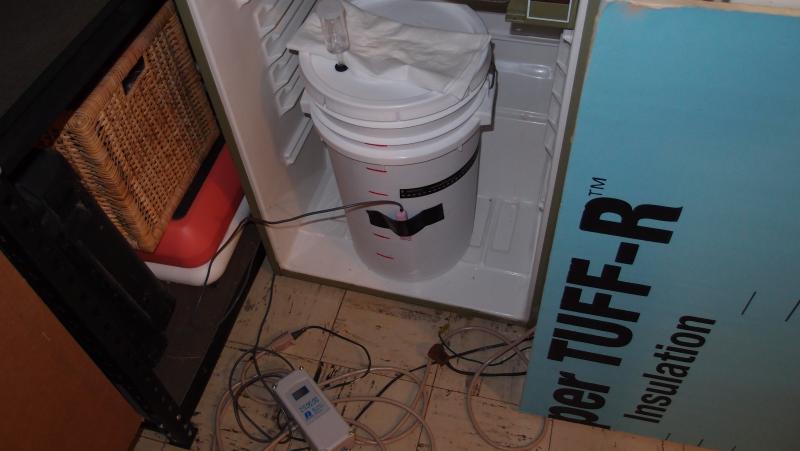LarryC
Well-Known Member
I just finished wiring up my shiney new Ranco single stage temp controller. I am going to be using it to run a FermWrap around my Better Bottle placed inside of a temp controlled freezer. I've modified the freezer's factory temp control switch to the point where it will hold 40° pretty well but that means it's going to be mighty chilly in there. I was thinking I would tape the Ranco probe to the side of the Better Bottle where the FermWrap has a open space.
That seemed like a good idea until I did a simple test with a glass of water. This is sort of backwards but I was in the garage which was 84° and I filled a glass with water and taped the probe to the glass. I then tossed in a few cubes and waited for the temperature to drop and my Ranco to kick on. The surprising part was that the water in the glass was in the high forties but the temp probe never showed it getting below 67° (waited maybe 10 minutes). One thing to clarify, the glass wasn't real glass - it is one of those acrylic things about 1/8" thick.
So my question is, will taping the probe to the better bottle control the temperature as close as I'd like to be or do I have to get the probe into the fermenting wert?
And the experts say?
That seemed like a good idea until I did a simple test with a glass of water. This is sort of backwards but I was in the garage which was 84° and I filled a glass with water and taped the probe to the glass. I then tossed in a few cubes and waited for the temperature to drop and my Ranco to kick on. The surprising part was that the water in the glass was in the high forties but the temp probe never showed it getting below 67° (waited maybe 10 minutes). One thing to clarify, the glass wasn't real glass - it is one of those acrylic things about 1/8" thick.
So my question is, will taping the probe to the better bottle control the temperature as close as I'd like to be or do I have to get the probe into the fermenting wert?
And the experts say?




